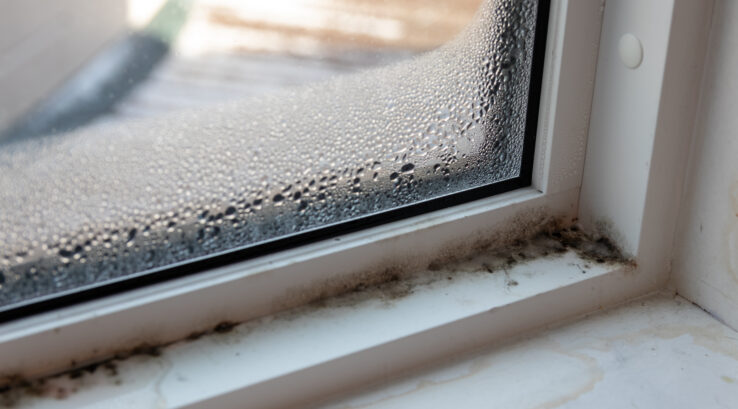Mold anywhere in your home isn’t just unsightly — it also releases allergens that can cause health problems in some people. One of the most common places to find mold is on and around the windows, but there are things you can do to stop it from growing and keep your home healthy. Let’s find out how to prevent mold on windows and what to do if you already have window mold.
Why Do I Have Mold on My Windows?
Mold flourishes in dark, damp environments, making broken or faulty windows an ideal breeding ground. If you see mold on the glass, it could be due to defective window seals allowing moisture or rainwater between the panes. Mold on the window sill is often caused by leaky windows or too much condensation.
Poor ventilation is another common culprit when it comes to moldy windows. Areas of the house that tend to be damp, such as bathrooms, are particularly vulnerable to window mold.
How to Prevent Mold on Windows
Mold usually forms between window panes, making it next to impossible to remove once it’s established. Therefore, prevention is better than cure when it comes to moldy windows. Following these tips can help stop window mold from developing in the first place:
- Repair faulty window seals as soon as you notice a problem
- Remove dust and moisture from the window panes, tracks, and frames as often as possible, as mold uses dust as a food source
- Install a dehumidifier to reduce condensation
How to Prevent Mold Around Window Sills
Fortunately, preventing mold around window sills is more straightforward because the window sills are more accessible. You can stop mold forming on the sills by:
- Cleaning the window sills regularly with warm water and detergent
- Keeping air flowing through your home by opening windows regularly or using fans
- Painting the window sills with a mold-resistant paint
I’ve Already Got Moldy Windows! What Do I Do?
Discovering mold on or around your windows can make your heart sink, but there’s often a straightforward solution. However, it’s sometimes best to replace your windows to prevent the problem from worsening. The location and extent of the mold can help you choose the most suitable course of action.
Frames and Sills
If you’ve noticed mold on your window frames or sills, don’t panic. You can usually remove mold from these areas using a water and bleach solution. Simply mix a cap of bleach with a gallon of water and scrub the affected areas to remove the mold.
However, this solution won’t work with wooden frames because bleach can damage the framing materials. If the mold growth is minor, you may be able to clean it with vinegar. Otherwise, consider replacing the frames to prevent the mold from spreading to the surrounding wall.
Drywall
Moldy drywall around your windows is trickier to resolve. When you’re dealing with potentially hidden mold, it’s best to call a mold remediation company to inspect the mold and recommend a suitable treatment option before you hire someone to make repairs or new installations.
Window Panes
Mold growing between the panes of glass in your windows is a sign of a fault, and the best solution is to replace the window with a new unit. At Thompson Creek, we design, build, and install high-quality custom windows backed by our Buyer Protection Guarantee. Contact us today to get a free estimate for your project.


